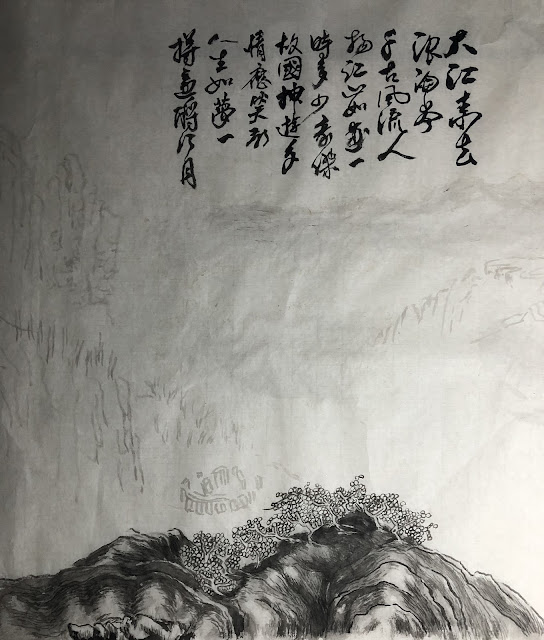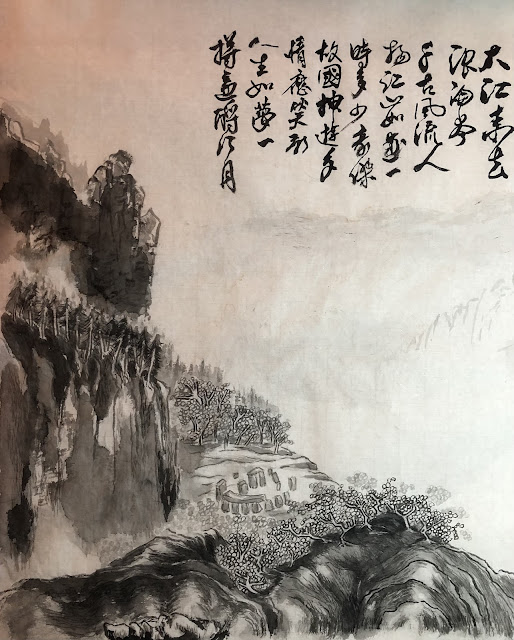With the blue section done on the painting, it is time to paint the red cliffs
So how red should the cliffs be? I had not intended for the painting to be a faithful representation of any facts, other than my nostalgic feelings about Su Dongpo's verses. Do these cliffs resemble the red landscape one finds along the highways of Utah? I researched online trying find pictures that show what the Red Cliffs look like today but I failed. It turns out that the exact location of the Battle of Chibi (Red Cliffs) is still a highly debated topic. There is a city called Chibi in China's Hubei province but the photos online does not give any indication about cliffs that are red, other than the huge carvings of the words Chibi in the rocks. I suppose this supports the debate that the term Chibi (Red Cliffs) perhaps got its name from the flames illuminating the cliffs in a reddish color during the naval battle.
I happen to have a photo from the central Oregon desert where the Painted Hills are located and with the help of photoshop I cut and paste my own Red Cliffs composite. Just to get the feel of it, that is.
I am assuming the red color comes from the high concentration of hematite in the rocks. The ferric oxide turns to rust and gives off the red color.
So my red shall be a rusty red. Perhaps I could scrape off some rust somewhere and use that as my organic pigment! A future project perhaps.
I apply my rust color from the back of the Xuan paper, as I did with the blue hues.
I wait for the color from the back of the paper to dry first before working on the front of the paper, reinforcing the namesake of my painting.
In the end the newly finished painting looks like this
I love the feel of the painting. It has an understated elegance to it. I am glad I did not paint everything a solid red color as in my composite. I am absolutely convinced that my current representation is infinitely more poetic, more evocative of "nostalgia".
There is one item that I have a problem. I do not like the shape of the reddish rock on the right. There is a landmark within the Columbia River Gorge area that resembles the painting, and it is located within the Rooster Rock State Park. Unfortunately I find it too much of a monolith in this setting, and seems to have detracted from the description of cliffs; especially when it receives the most "red" in the coloring scheme.






















